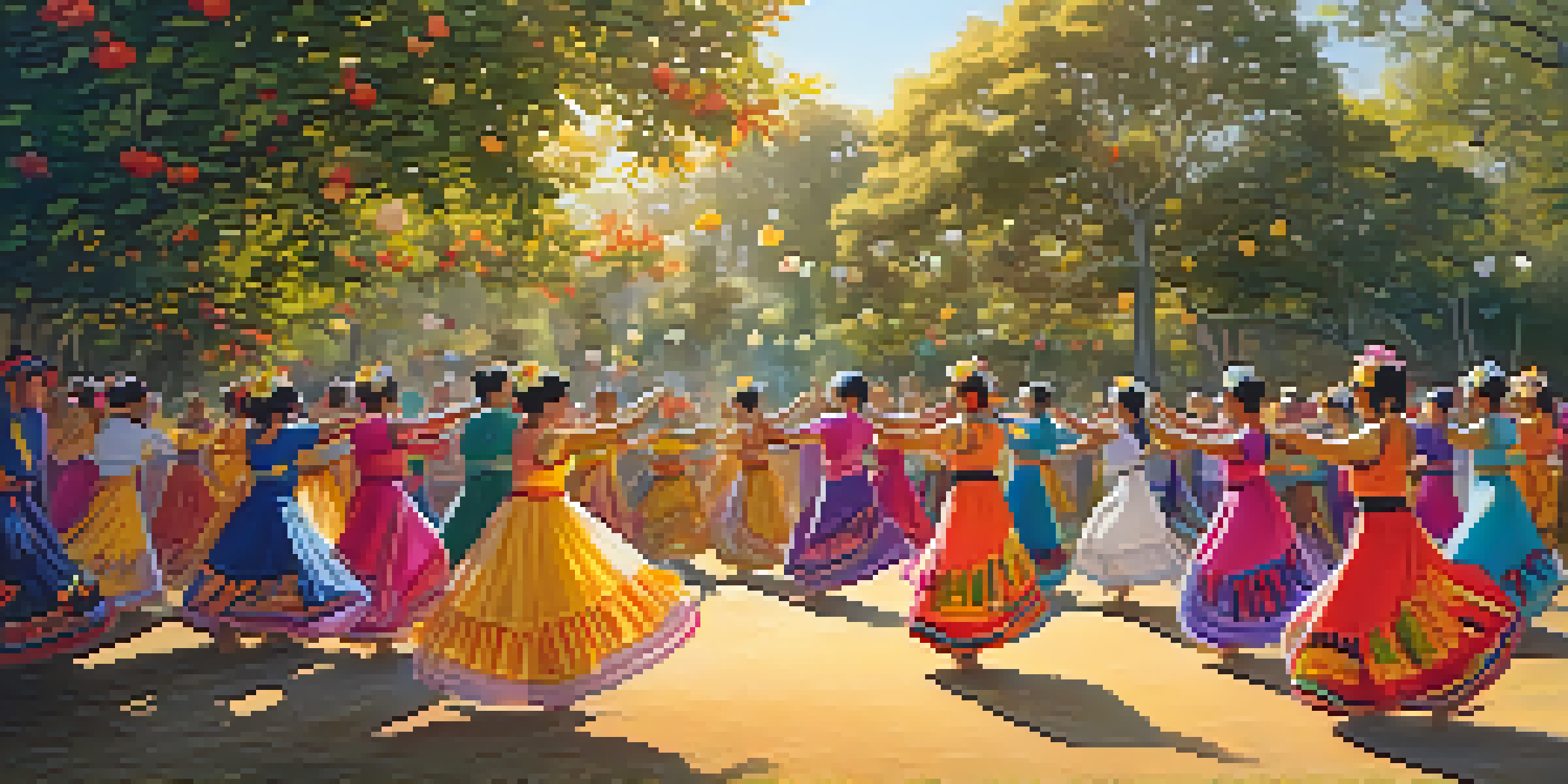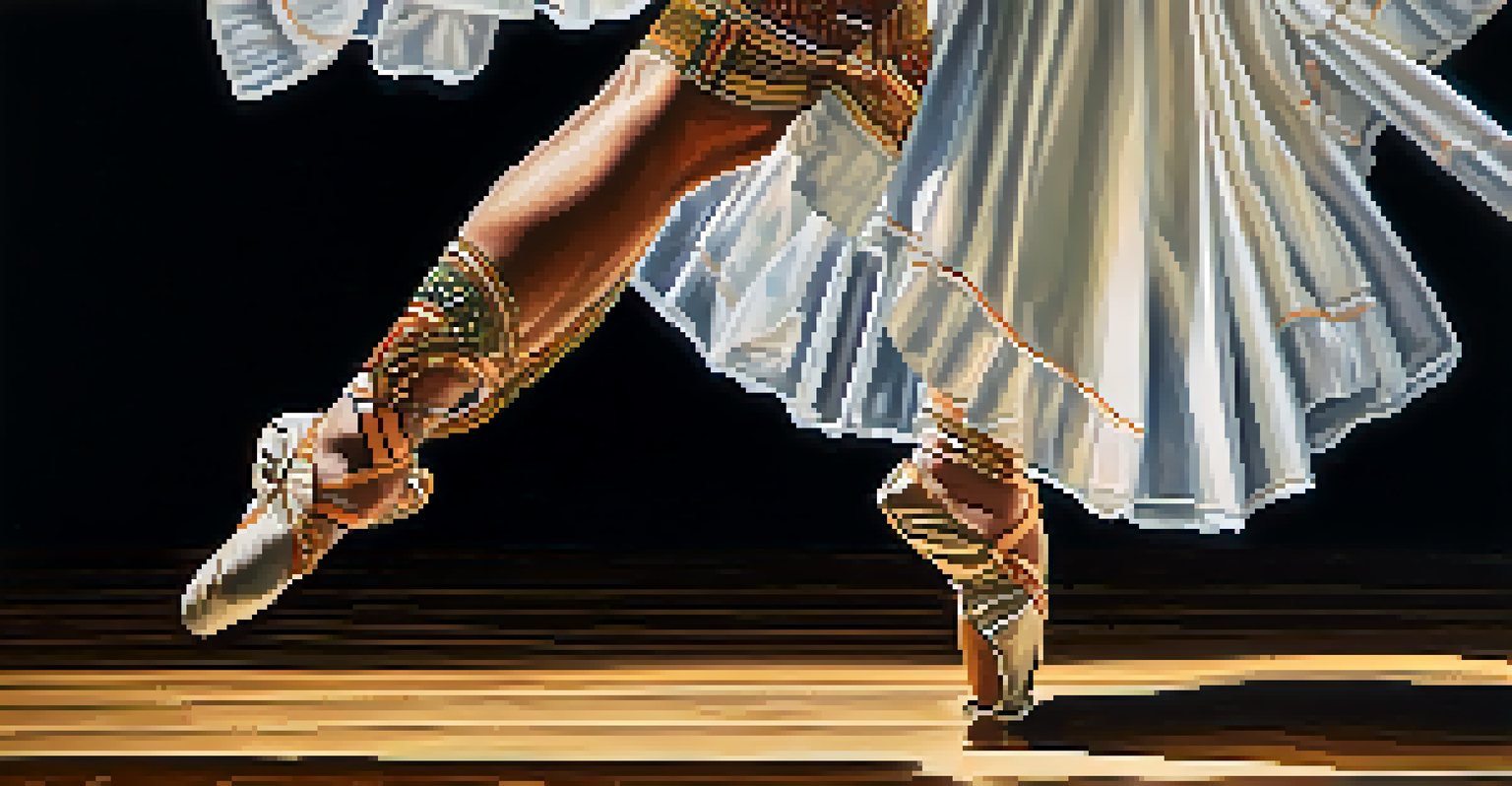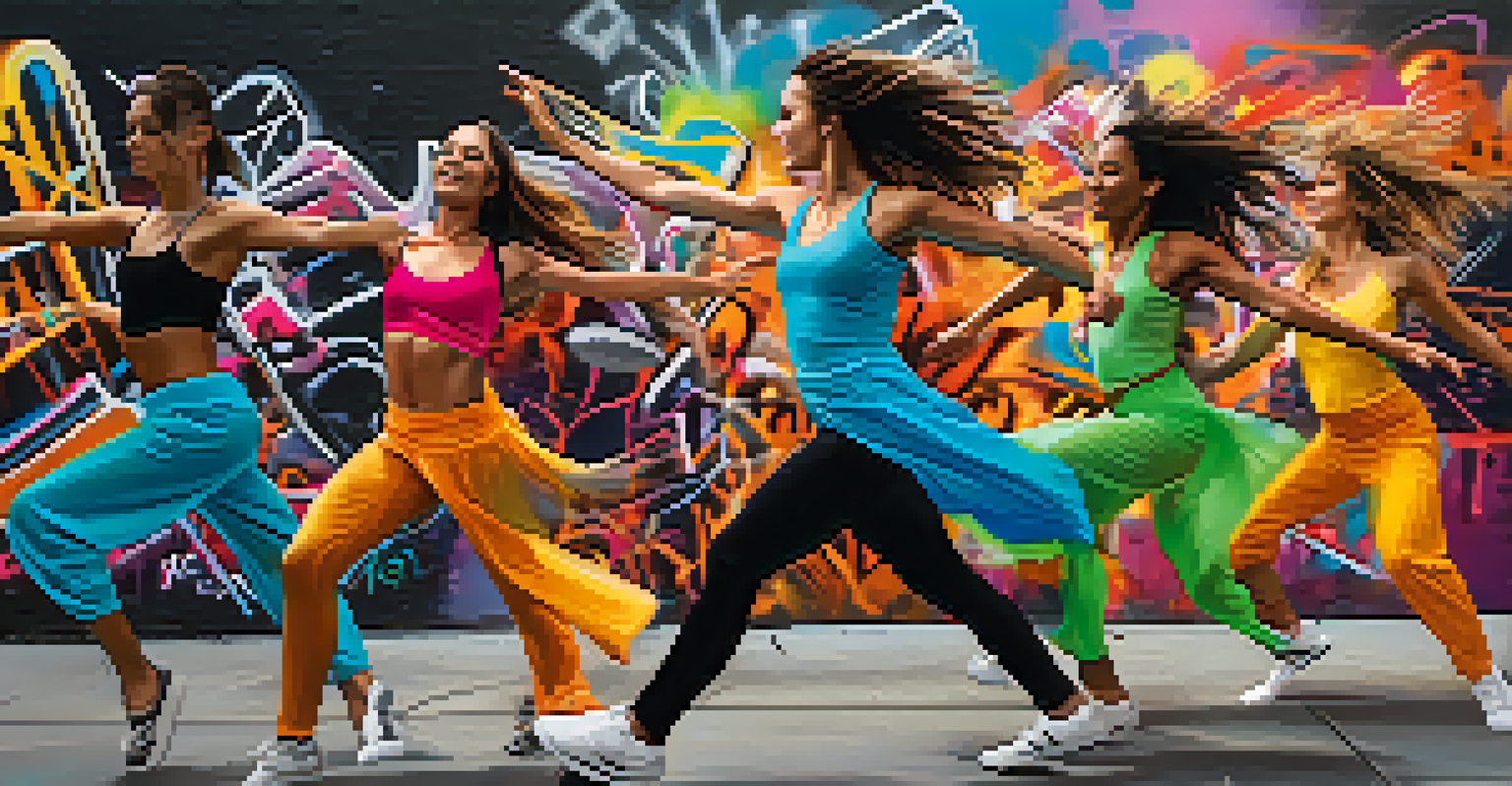The Intersection of Dance and Historical Memory

Understanding Historical Memory and Its Importance
Historical memory refers to how societies remember and interpret their past. It's not just about facts and dates; it encompasses the emotions, narratives, and cultural elements that shape our collective identity. Understanding this concept is crucial as it influences how communities perceive their history and their place in the world.
Dance is the hidden language of the soul.
Dance, as an art form, captures these emotions and narratives, offering a unique medium through which history can be expressed and preserved. It serves as a living testament to the experiences of individuals and communities, often conveying stories that written records may overlook. Through rhythm and movement, dance makes history accessible and relatable, allowing new generations to connect with their heritage.
By intertwining physical expression with memory, dance creates a dynamic dialogue between the past and present. This interplay ensures that historical narratives continue to evolve, allowing society to reflect on its journey while inspiring future artistic expressions. Ultimately, historical memory through dance fosters a sense of belonging and continuity within communities.
Dance as a Tool for Cultural Preservation
Throughout history, dance has played a critical role in preserving cultural identities, especially in communities facing the threat of erasure. Traditional dances often encapsulate stories, beliefs, and values that define a culture, serving as a vessel for memory. For instance, Indigenous dance forms often reflect spiritual connections to the land and ancestors, passing down vital cultural knowledge through generations.

Moreover, these dances are not static; they adapt over time, incorporating contemporary influences while maintaining their core essence. This fluidity allows cultures to remain relevant in an ever-changing world, ensuring that their historical memory is both preserved and celebrated. The act of performing these dances keeps the stories alive, empowering communities to reclaim and celebrate their identities.
Dance Preserves Cultural Identity
Traditional dance forms serve as vital vessels for memory, encapsulating stories and values that define cultural identities.
In essence, dance becomes a powerful act of resistance against cultural homogenization. By embracing their traditional movements and rhythms, communities assert their existence and significance in the broader narrative of history. Thus, dance serves not only as a form of expression but also as a crucial tool for cultural preservation.
The Role of Dance in Social Movements
Dance has historically been a potent form of expression within social movements, helping to articulate collective memories of struggle and resilience. From the civil rights movement to contemporary protests, dance often emerges as a means of unifying voices and experiences. It allows participants to embody their emotions, transforming pain into powerful statements of hope and resistance.
History is not a burden on the memory but an illumination of the soul.
For example, the 'Black Lives Matter' movement has utilized dance to convey messages of solidarity and empowerment. Choreographed performances at protests not only engage participants but also attract wider audiences, amplifying their message. This interplay between dance and activism showcases how historical memory can be actively reshaped through performance.
Furthermore, dance in social movements can create a sense of community among participants, fostering connections that transcend individual experiences. By sharing a collective movement and memory, dancers reinforce their commitment to the cause, ensuring that their shared history is not forgotten. This living history, expressed through dance, continues to inspire future generations to advocate for change.
Dance as a Reflection of Historical Trauma
Dance has the incredible ability to articulate historical trauma, allowing communities to process and express their collective pain. Many traditional dance forms emerge from experiences of loss, displacement, or violence, serving as a means to honor those affected. Through movement, dancers can convey emotions that words often fail to capture, creating a visceral connection to their history.
For instance, the dance performances that commemorate events like the Holocaust or the Transatlantic Slave Trade often serve as a poignant reminder of suffering while also celebrating resilience. These performances create spaces for reflection and healing, allowing individuals to confront their past and acknowledge the impact it has on their present. Dance becomes a medium through which trauma is transformed into a narrative of survival and hope.
Dance in Social Movements
Dance acts as a powerful form of expression within social movements, uniting voices and transforming pain into statements of hope.
By exploring historical trauma through dance, communities can foster conversations around healing and reconciliation. This process not only helps individuals come to terms with their experiences but also encourages broader societal acknowledgment of historical injustices. Ultimately, dance serves as a powerful tool for both personal and collective healing, ensuring that painful memories are neither ignored nor forgotten.
The Influence of Technology on Dance and Memory
In today’s digital age, technology plays a pivotal role in how dance and historical memory intersect. Social media platforms provide a space for dancers to share their performances, making cultural narratives more accessible to a global audience. This democratization of dance enables diverse voices to be heard, allowing for a richer tapestry of historical memory to be woven.
Moreover, technology facilitates the preservation of dance forms that may be at risk of fading away. Video recordings, online tutorials, and virtual performances ensure that traditional dances can be learned and passed down regardless of geographical barriers. In this way, technology acts as both a bridge and a safeguard for cultural heritage, ensuring that historical memories are archived and celebrated.
However, this technological influence raises questions about authenticity and representation. As dance spreads across the internet, it can sometimes lose its contextual meaning, leading to debates over cultural appropriation. Navigating these complexities is essential to ensuring that dance continues to honor its historical roots while adapting to contemporary expressions.
Global Perspectives on Dance and Historical Memory
Dance transcends borders, and its role in expressing historical memory varies across cultures. In many African cultures, for instance, dance is an integral part of rituals that celebrate life milestones or commemorate significant events. These performances not only reflect individual stories but also highlight the collective history of a community, weaving together personal and societal narratives.
In contrast, Western dance forms often lean toward individual expression, focusing on personal storytelling rather than communal memory. However, movements like ballet and contemporary dance have also begun to explore themes of historical memory, addressing issues such as colonialism and identity. This evolution illustrates how dance can adapt to reflect the complexities of cultural memory across different contexts.
Technology and Dance Memory
The digital age enhances the preservation and sharing of dance, enabling diverse cultural narratives to reach a global audience while raising questions of authenticity.
Ultimately, understanding these global perspectives enriches our appreciation of dance as a medium for historical memory. By examining how various cultures interpret and express their histories through movement, we gain insight into the universal human experience. This appreciation fosters a greater sense of empathy and connection among diverse communities, celebrating the shared power of dance.
Looking Ahead: The Future of Dance and Memory
As we look to the future, the intersection of dance and historical memory will continue to evolve, driven by cultural shifts and technological advancements. Emerging choreographers are increasingly blending traditional forms with contemporary styles, creating innovative performances that reflect the complexities of modern identity. This fusion not only honors the past but also invites new interpretations and conversations around history.
Additionally, as societies grapple with the challenges of globalization and cultural preservation, dance will play an essential role in articulating these narratives. Engaging younger generations in dance will ensure that the stories of their ancestors are not forgotten. By fostering a continued dialogue about dance and memory, communities can cultivate a deeper understanding of their heritage.

In conclusion, the future of dance as a vehicle for historical memory is bright and full of potential. As we embrace new forms of expression and connect with diverse cultures, dance will undoubtedly remain a powerful tool for preserving and reflecting on our shared histories. Together, we can continue to celebrate the rich tapestry of human experience through the art of dance.